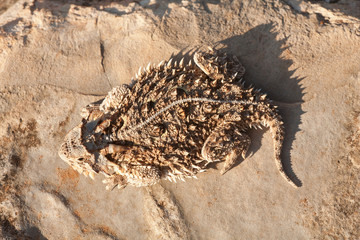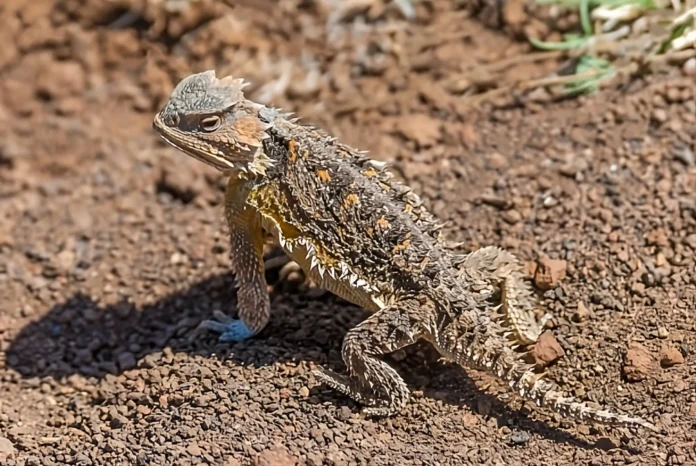Texas Horned Lizard (Phrynosoma cornutum)
Table of Contents
Scientific Classification
| Kingdom | Animalia |
| Phylum | Chordata |
| Class | Reptilia |
| Order | Squamata |
| Family | Phrynosomatidae |
| Genus | Phrynosoma |
| Species | cornutum |
| Scientific Name | Phrynosoma cornutum |
Description
The Texas Horned Lizard, affectionately known as the “horny toad,” is quite the delightful little reptile. With its stout body and prominent horns atop its head, it looks like something straight out of a desert legend. Typically, these lizards measure between 2.5 to 4.5 inches from snout to vent, not counting their tail, and they usually weigh around 25 to 50 grams. Their colors can vary from sandy tan to a rich reddish-brown, allowing them to blend seamlessly into the soil of their arid habitats—perfect for camouflage!
Their bodies are covered in rough, spiky scales that give them a fierce appearance. These scales not only help regulate their body temperature but also serve as a defense mechanism against predators. Interestingly, the crown of short horns on their heads is made of bone and skin, rather than keratin like the horns of mammals.
Despite their tough look, Texas Horned Lizards are quite gentle creatures. They tend to move at a leisurely pace, favoring stealth and stillness over quick movements.
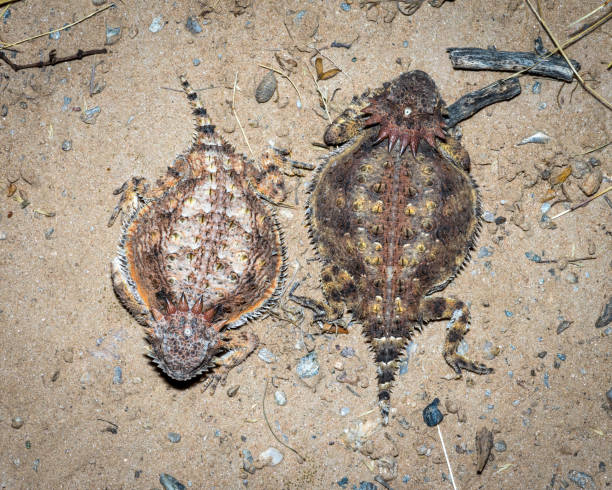
Distribution
The Texas Horned Lizard used to live in many areas of the central and southwestern United States. Today, they are still found in:
- Texas (widely across the state)
- Oklahoma
- New Mexico
- Northern Mexico
- Parts of Arizona and Colorado
- Some regions of Kansas and Louisiana (historically more common)
Their numbers have dropped in many areas. This is due to habitat loss and other environmental issues. In Texas, they remain a symbol of the state’s natural heritage and are even the official state reptile.
Habitat
Texas Horned Lizards are fond of dry, open spaces. They really flourish in areas with sparse vegetation and soft, sandy, or loamy soil. You can find their habitats in:
– Arid and semi-arid grasslands
– Desert scrublands
– Open woodlands
– Rocky outcrops
These lizards love basking in the sun and need plenty of room to dig burrows. They spend most of their time on the ground and don’t usually climb trees or shrubs. A crucial part of their environment is the presence of harvester ants, which serve as their primary food source. So, if you spot a lot of these ants around, chances are you’ll find some horned lizards nearby!
Diet
The Texas Horned Lizard is quite the ant aficionado, with a particular fondness for the red harvester ant (Pogonomyrmex spp.). These little guys can chow down on dozens, or even hundreds, of ants in one go! But ants aren’t the only thing on their menu. Their diet also features:
– Beetles
– Grasshoppers
– Spiders
– Termites
– Occasionally, caterpillars and other small invertebrates
They’ve got a clever hunting strategy: they lie in wait, perfectly still, until their prey wanders too close, then they flick out their sticky tongue to snag it. Plus, their digestive system is tough enough to handle formic acid and the hard shells of their favorite ants.
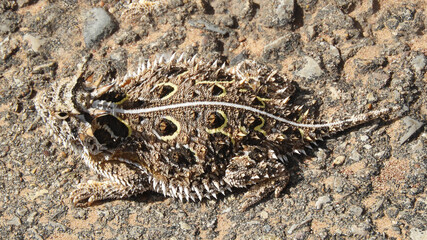
Behavior
Texas Horned Lizards are typically solitary creatures that take their time moving around. Most of their day is spent soaking up the sun or hiding out under loose soil. Here are some of their interesting behaviors:
– They love to bask in the early morning and late afternoon sun.
– When the midday heat gets too intense, they burrow into the ground to cool off.
– If they feel threatened, they have a unique trick: they freeze or flatten their bodies to blend in and avoid being seen.
– And if that’s not enough, they can squirt blood from their eyes as a defense mechanism!
These reptiles are diurnal, which means they’re most active during the day. Instead of getting into fights, they prefer to steer clear of trouble whenever they can.
Lifespan
When it comes to lifespan, Texas Horned Lizards usually live around 4 to 7 years in the wild. However, if they’re kept in captivity with the right care, they can thrive for 8 to even 10 years! This extended life is all about providing a diet that aligns with their natural eating habits.
Unfortunately, many young horned lizards don’t survive their first year. They have to deal with predators, harsh environmental conditions, and sometimes a shortage of food. But for those that make it to adulthood, the odds of living several more years improve significantly.
Reproduction and Lifecycle
The Texas Horned Lizard has a yearly reproduction cycle that aligns with the changing seasons. After mating in the spring, the females lay their eggs in early summer. Here’s a quick look at their reproductive process:
Egg-laying: This takes place from late May to July.
Clutch size: Females typically lay between 6 to 20 eggs, depending on their size and overall health.
Incubation period: The eggs take about 40 to 60 days to hatch.
Hatching: This usually happens from July through September.
Once they hatch, the young lizards are completely independent and don’t receive any parental care. They’re miniature versions of the adults and start hunting for ants just a few hours after they emerge!
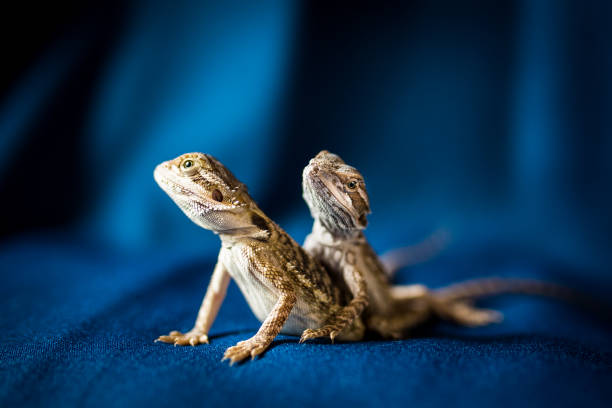
Predators
Texas Horned Lizards might look tough on the outside, but they have quite a few natural enemies, including:
– Birds of prey like hawks and roadrunners
– Snakes
– Coyotes
– Bobcats
– Domestic cats and dogs, especially in suburban areas
Juvenile lizards are particularly at risk because of their smaller size and softer bodies. Adult lizards rely on their ability to blend in and make quick escapes to dodge predators. They even have some unique defenses, like squirting blood when threatened!

Nest
When it’s time for the female Texas Horned Lizard to lay her eggs, she seeks out soft, sandy soil. She looks for a cozy, warm spot that feels safe. Using her hind limbs, she digs a burrow about 4 to 6 inches deep. After laying her eggs, she carefully buries them and leaves them to incubate on their own.
For the eggs to hatch successfully, the nesting site needs to stay undisturbed and maintain consistent temperatures. Females often choose locations that offer a nice mix of sun and shade to help regulate the warmth.

Adaptations
Texas Horned Lizards are truly remarkable examples of evolution, equipped with some incredible adaptations that help them survive in their harsh environments:
Camouflage: Their colors blend perfectly with the dry soil and gravel around them.
Spiked armor: This tough exterior provides a solid defense against potential predators.
Blood squirting: A unique defense mechanism where they shoot blood from their eyes, which can startle and deter attackers.
Water absorption: Their scales are designed to channel water directly to their mouths through tiny grooves.
Burrowing: This behavior not only helps them regulate their body temperature but also keeps them safe from predators.
Each of these adaptations plays a vital role, making them exceptionally well-suited to thrive in arid landscapes.
Mating Season
The mating season kicks off in late spring, right after lizards emerge from their winter slumber around March or April. During this period, the males get a bit more energetic and start exploring wider territories in search of females.
When a male spots a potential mate, he’ll show off with some head bobs and body vibrations. If the female is interested, she’ll let him mount, and the copulation can last a few minutes. Once that’s done, the males typically head off and don’t stick around for nesting or parenting duties.

Breeding
Breeding is annual and timed to take advantage of the warm summer months when food is plentiful. Females lay their eggs in concealed burrows and abandon them immediately after. The young are born fully equipped to survive but face high mortality rates.
In good years with plenty of food, a female may lay a second clutch. This is rare but not impossible.
Interesting Facts
- Did you know these fascinating facts about the Texas Horned Lizard?
- Official State Reptile: This unique lizard was officially named Texas’s state reptile back in 1993.
- Blood-squirting defense: One of its most surprising traits is its ability to squirt blood from its eyes! It can shoot this startling defense mechanism up to 5 feet away, which helps scare off predators like foxes and coyotes.
- Ant addiction: These little guys can munch on a whopping 100 ants in one sitting! They particularly enjoy red harvester ants, even though their bites can be quite painful.
- Temperature regulation: To keep their bodies at the right temperature, horned lizards cleverly turn their bodies to either soak up the sun or seek shade.
- Cultural icon: For many Native American tribes, horned lizards symbolize protection and patience, making them an important part of cultural heritage.
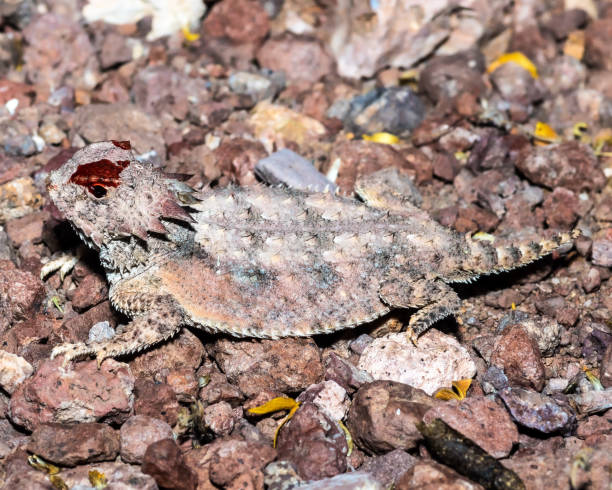
Conservation Status
The Texas Horned Lizard is labeled “Least Concern” by the IUCN. However, local populations face serious issues, especially in Texas and Oklahoma.
Threats include:
- Habitat loss from urban development and agriculture
- Pesticides, which reduce harvester ant populations
- Invasive fire ants, which outcompete native ants and even prey on lizard hatchlings
- Pet trade, although less of an issue today
The Texas Parks and Wildlife Department lists them as a threatened species. They are protected by law against collection and harm.
Conclusion
This once-familiar reptile used to roam freely in our backyards and fields. Today, it symbolizes the importance of conservation and the respect we owe to our native ecosystems.
The Texas Horned Lizard serves as a powerful reminder that even the smallest creatures play a vital role. Whether you’re a herpetologist, a proud Texan, or simply someone who loves nature, this lizard showcases the unique beauty that our natural world has to offer.
